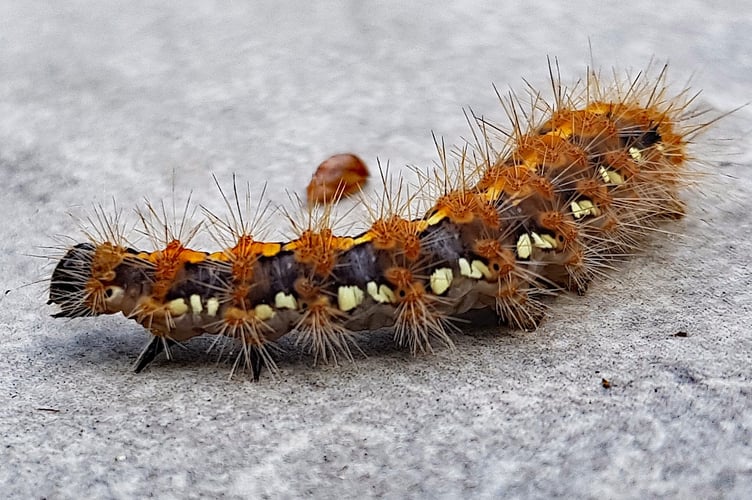
As a nature lover I’m an avid follower of the Natural Goldsworth Park group on Facebook, especially as walking problems now mean I’m unable to get as close to nature as I’d like!
I’m in awe of photos posted to the group showing the variety of wild plants and creatures seen in Goldsworth Park – Woking’s “garden estate”. Many contributors have posted fantastic photos, especially the group’s most frequent contributors: Gerry Smeethers, Liz Wilkinson and Conor Macleod.
These three have also posted photos of beautiful local skyscapes, especially of stunning sunsets and gorgeous dawns.
I must also mention the magnificent photo of the Aurora seen over Goldsworth Park Lake, photographed by Deb Evans, and the fascinating videos and photos of insects on the North Meadow by Katy Murray. Several others have also shared their superb photos of our flora and fauna on the group – sorry I can’t mention everyone.
We’re lucky not only to have a rich and varied flora and fauna in Goldsworth Park but also many nature lovers who love photography and generously share their work.
Among the photos shared by Gerry Smeethers are several showing Jersey Tiger moths. This distinctive insect has been resident in our area for just a couple of years but often spotted. Gerry’s photos include caterpillars as evidence they are breeding here.
The Jersey Tiger is named for the distinctive markings on its forewings, which resemble a tiger’s stripes. The forewings are usually closed when the moth is at rest, so they hide its bright red hindwings which are visible in flight.
The Jersey Tiger moth used to be confined to the Channel Islands and pockets of the south coast of England, especially Devon. In 2019 an unusually large influx of migrants was recorded in the southern half of the UK.
Caterpillars from eggs laid by these migrants boosted the numbers of moths flying in 2020. Since then they have spread northwards through England.
After featuring the Jersey Tiger here in the News & Mail last year, readers from all around Woking responded with their sightings and photos. The reports continued this summer. It is most often seen flying on warm days, but also flies at night. It can be found anywhere, in gardens, parks and hedgerows. The caterpillars feed on a wide variety of plants, such as dandelions, nettles, white dead nettle, plantains, borage, ground-ivy and bramble.
Gerry has been recording when he has seen Jersey Tigers. He told me: “One turned up on my window on 26 July, then I had at least one in my garden each day, often more. They spent most of the day here simply resting – not even trying for nectar. They flew off at dusk, returning from about 10 o’clock the next day.”
Gerry added that on 6 August there were five present at the same time on a variety of shrubs or other resting places. “Since the 6 I have only seen a singleton, on a few days and now they never hang around for long. I suspect the key task of mating had been completed by 6 or 7 August.
“They are a fascinating species and I have had a ringside seat in my garden for photography.”
If you love our local natural world, take a look at the Natural Goldsworth Park Facebook group – its windows on local nature may amaze you!




